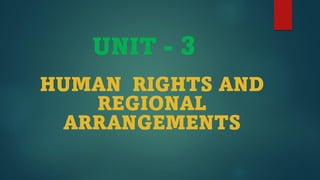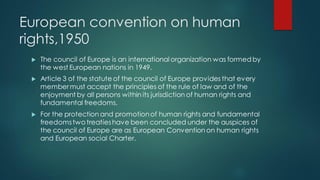This document provides information on three regional arrangements for human rights:
1) The European Convention on Human Rights established the European Commission on Human Rights and the European Court of Human Rights to protect rights in Europe.
2) The American Convention on Human Rights created the Inter-American Commission on Human Rights and the Inter-American Court of Human Rights for the Americas.
3) The African Charter on Human and Peoples' Rights was created in 1981 to promote rights in Africa.







































